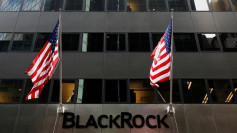Wells Fargo, the fourth-largest bank in the U.S. by assets, is bracing for substantial layoffs, with CEO Charlie Scharf revealing plans for significant severance expenses in the fourth quarter. This development, which underscores the bank's focus on efficiency amid a challenging economic landscape, was shared by Scharf during a Goldman Sachs conference in New York.
The bank anticipates severance costs of approximately $750 million to $1 billion, driven largely by the need to manage an unexpectedly low employee turnover. Scharf indicated that Wells Fargo, grappling with rising funding costs and a downturn in Wall Street dealings, must adopt more aggressive headcount management strategies. This approach aligns with a broader trend among Wall Street leaders, who have noted a surplus in staffing due to unusually low attrition rates.
Wells Fargo's workforce reduction has been ongoing since the third quarter of 2020. The bank reported approximately 227,363 employees as of September 2023, marking a reduction of about 11,300 jobs, or 4.7%, this year alone. A significant factor in these layoffs has been Wells Fargo's withdrawal from the mortgage market, alongside general efforts to enhance operational efficiency.
In discussing the bank's future direction, Scharf emphasized the need to balance efficiency with continued investment in revenue-generating areas, such as credit cards and capital markets. He candidly admitted that the bank is still far from its desired efficiency level. This gap has prompted a strategic shift, encouraging employees to work near one of the bank's office hubs. The bank will offer paid relocations to some employees, while others will receive only severance offers. Employees unwilling to relocate might face job termination.
Despite these cautionary measures, Scharf expressed optimism about the U.S. economy's resilience, leaning towards a "soft landing" scenario for the upcoming year. He highlighted the consumer segment's robustness and anticipated growth in credit card usage.
Wells Fargo's journey towards operational efficiency has not been without challenges. The bank continues to operate under an asset cap imposed by regulators following the fake accounts scandal, restricting its growth potential. It is actively working to lift nine open consent orders from banking regulators demanding increased oversight of its practices. Scharf reassured investors about the progress made in addressing these regulatory issues.
The bank is also contending with weaknesses in its commercial real estate portfolio, particularly office loans, expecting to see losses that may persist into the next year. To mitigate potential credit losses, Wells Fargo set aside $359 million in the third quarter, adding to a total of $2.6 billion in allowances for the first nine months of 2023.
Despite high interest rates and looming economic downturn fears, Scharf maintains a cautiously optimistic outlook for 2024. He noted that U.S. consumers remain financially healthy, even though spending has slowed and loan delinquencies have started to rise. Wells Fargo's strategic adjustments in auto loans and mortgage servicing portfolios reflect these changing market dynamics.
The bank's shares, however, experienced a decline of over 1% following Scharf's announcement. This reaction underscores the broader market's sensitivity to shifts in major financial institutions' operational strategies and outlooks.






